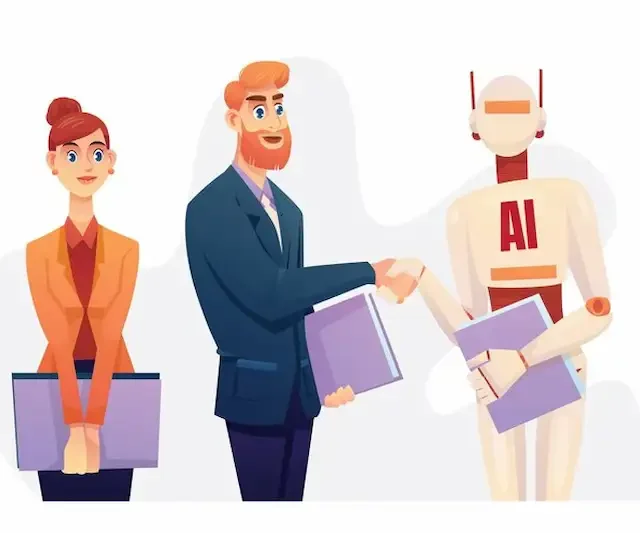Comprehensive Guide to Recruitment Funnel

The quest for finding exceptional candidates is ongoing, and to make this process as efficient and effective as possible, businesses employ a crucial tool known as the “recruitment funnel.” This meticulously crafted approach guides both employers and candidates through a structured journey, starting from the initial awareness of a job opening and culminating in the ultimate hiring decision.
In this comprehensive guide, we’ll explore the ins and outs of the recruitment funnel, its stages, and how to create one tailored to your organisation’s unique needs and aspirations. Let’s get started!
What Is the Recruitment Funnel?
The recruitment funnel is a systematic and strategic approach that organisations use to facilitate the process of finding and hiring the most suitable candidates for their job vacancies. This metaphorical “funnel” represents the stages that candidates pass through on their journey towards becoming valued members of an organisation’s workforce. Each stage of the funnel serves a specific purpose, from creating awareness of job opportunities to making the final hiring decision.
In essence, the recruitment funnel is a structured framework designed to efficiently and effectively filter and select candidates, ensuring that only the most qualified and culturally aligned individuals progress through each stage. It enables HR professionals and hiring managers to manage the recruitment process methodically and systematically, enhancing the chances of securing top talent for their organisations.
Recruitment Funnel Stages
The recruitment funnel comprises several distinct stages that guide the journey from initial awareness of job opportunities to the ultimate hiring decision. Let’s delve into each of these stages to gain a comprehensive understanding of how the recruitment process unfolds:
1. Awareness
At the top of the recruitment funnel is the “Awareness” stage. This is where the process begins, as job openings are made known to potential candidates. Organisations employ various marketing and advertising strategies to ensure that their job vacancies are visible and reach a wide audience. This stage is all about creating a buzz and letting the world know that there are opportunities available within the company.
2. Attraction
Following the “Awareness” is the “Attraction” stage. In this phase, the goal is to draw the attention of prospective candidates who have become aware of the job openings. Employers use compelling job descriptions, showcase their company’s culture, values, and benefits, and provide a glimpse of the growth prospects that candidates can expect. An enticing presentation at this stage can significantly impact the quality and quantity of applicants.
3. Interest
Once candidates are attracted to the job opportunities, the “Interest” stage comes into play. At this point, individuals begin to show a genuine interest in the organisation and the positions available. They might explore the company’s website in more detail, read about its values and mission, and even sign up for job alerts. The Interest stage is crucial for nurturing potential candidates and providing them with the information they need to make an informed decision about applying.
4. Applying
The “Applying” stage marks a significant transition in the recruitment funnel. Candidates who have shown interest take the next step by formally applying for the job. This involves filling out application forms, submitting their CVs, and providing any required documentation. The application process should be user-friendly, efficient, and free from unnecessary barriers to ensure a high conversion rate from interested candidates to applicants.
5. Evaluating
With a pool of applications in hand, the next stage is “Evaluating.” Here, HR professionals and hiring managers review and assess the qualifications and credentials of the candidates. This involves scrutinising CVs, cover letters, and any additional materials to determine whether the applicants meet the job requirements. Having clear and well-defined criteria for evaluation is essential to ensure a fair and consistent selection process.
6. Interviewing
The “Interviewing” stage is a critical juncture in the recruitment process. Shortlisted candidates from the evaluation stage move on to interviews. This can include various forms, such as phone interviews, video interviews, or face-to-face meetings. The objective is to further assess candidates’ skills, experience, and their cultural fit within the organisation. Effective interviewing helps in making well-informed decisions about which candidates are the best fit for the role.
7. Hiring
The final destination in the recruitment funnel is the “Hiring” stage. This is where the ultimate decision is made. After the interviews are complete, employers select the candidate who best aligns with the job requirements and the company’s culture. The formal job offer is extended, and the onboarding process begins, officially welcoming the chosen candidate into the organisation.
How Do You Create a Recruitment Funnel?
Creating a recruitment funnel is a strategic endeavour that requires careful planning and execution. To establish an effective recruitment funnel for your organisation, you need to follow a series of steps that will help you customise the process to meet your unique needs and goals.
1. Define Your Goals
The first step in creating a recruitment funnel is to understand your organisation’s hiring needs and objectives. Define the specific positions you want to fill, the skills and qualities you’re looking for in candidates, and the timeline for your recruitment efforts. Having clear goals will help you tailor the funnel to your unique requirements.
2. Identify Your Target Audience
In this stage, you need to identify your target audience—the candidates you want to attract. Develop a detailed candidate persona that outlines their characteristics, skills, preferences, and expectations. Understanding your ideal candidate will guide your funnel’s design.
3. Attract and Engage
With your target audience in mind, focus on attracting potential candidates. Create compelling job descriptions that not only list qualifications but also highlight your company’s culture, values, benefits, and growth opportunities. An attractive careers page on your website can be a powerful tool for drawing candidates in.
4. Streamline the Application Process
Make it as easy as possible for candidates to apply for your job positions. Ensure that your application process is user-friendly and efficient. Mobile optimization is crucial, as many candidates use smartphones to search for and apply for jobs. Reducing friction in the application process can lead to a higher conversion rate from interested candidates to applicants.
5. Screen and Assess
Develop a clear and consistent process for evaluating candidates. Define the criteria you’ll use to assess their qualifications and fit for the role. Consider using assessments, structured interviews, and reference checks to make objective judgments about each candidate.
6. Onboarding
Once you’ve made your hiring decision, it’s important to ensure a smooth onboarding process. Effective onboarding sets the tone for a candidate’s experience with your organisation and helps them integrate seamlessly into the team. Provide the necessary training and support to ensure a successful transition.
In conclusion, understanding and implementing a recruitment funnel is a fundamental step towards efficient and successful hiring. By following the stages outlined in this guide and continually refining your approach, you can ensure that your organisation attracts, selects, and retains the best talent available.
To further enhance your HR performance and streamline your recruitment process, consider leveraging advanced technology like RecruitFirst’s HRIS (Human Resource Information System) software. Our HRIS is designed to simplify and automate data management and HR processes, allowing your company to focus on what truly matters—limitless business success.
With RecruitFirst’s HRIS software, you can elevate your HR operations, improve candidate management, and make data-driven decisions that drive your organisation forward. Get started today and experience the difference that cutting-edge technology can make in your recruitment and HR efforts!







